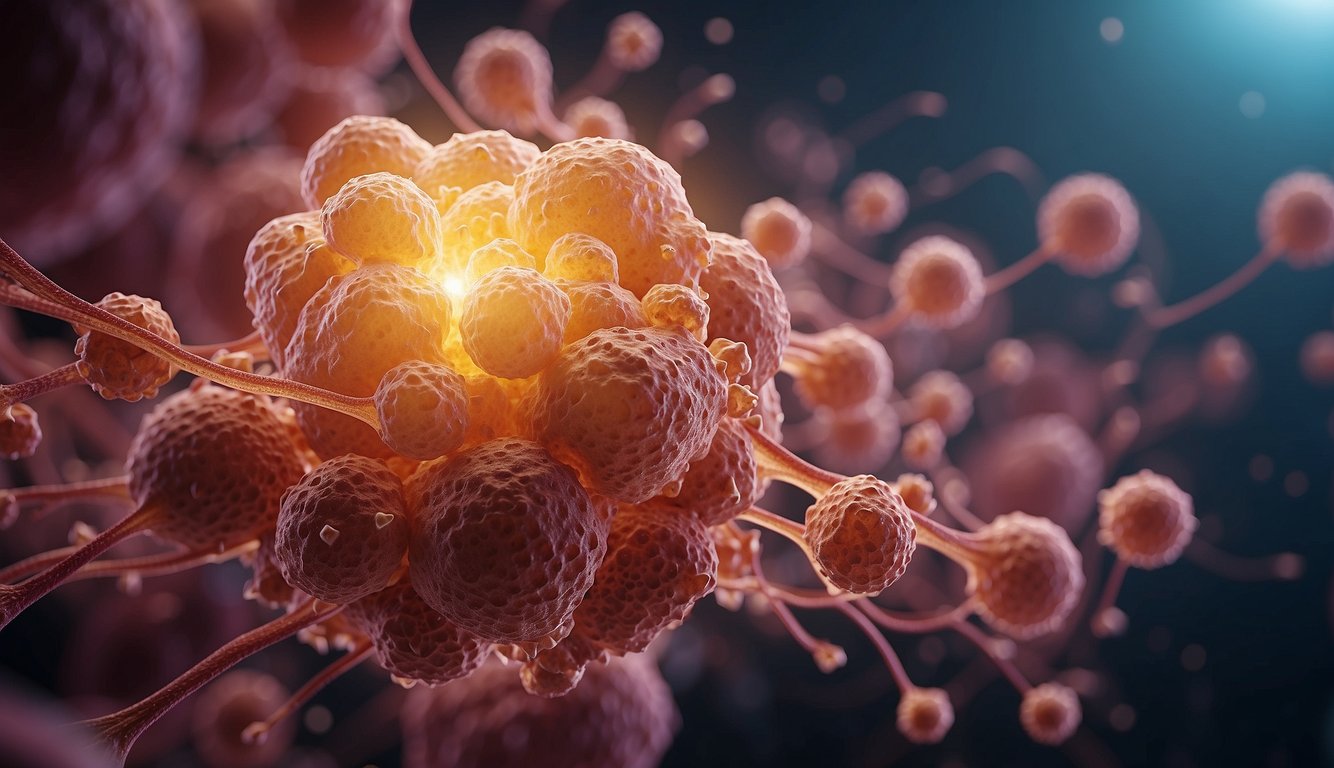TheHerbProf.com is a treasure trove of knowledge for those interested in natural healing and herbal remedies. The website is run by Paul Johnston MD. A naturopathic who has not only received extensive education in the field but also has personal experience in self-healing.
Fibroid diseases are non-cancerous growths that occur in the uterus. They are also known as uterine fibroids, leiomyomas, or myomas. Fibroids can vary in size and number, and they can cause a range of symptoms, including heavy menstrual bleeding, pelvic pain, and pressure. While fibroids are common, affecting up to 80% of women by the age of 50, they can be a source of discomfort and distress for those who experience symptoms.
Uterine fibroids can develop in any woman of reproductive age, but they are more common in women who are in their 30s and 40s. There are several types of fibroids, classified based on their location in the uterus. Subserosal fibroids grow on the outer surface of the uterus, while intramural fibroids grow within the muscular wall of the uterus. Submucosal fibroids grow just beneath the lining of the uterus and can protrude into the uterine cavity. Pedunculated fibroids are attached to the uterus by a stalk, and they can grow either inside or outside the uterus. The symptoms of fibroids can vary depending on their size, location, and number. While some women may experience no symptoms, others may experience heavy menstrual bleeding, pelvic pain, and pressure.
Understanding Fibroid Diseases
Fibroids are non-cancerous growths that develop in the uterus. They are also known as leiomyomas or myomas. Fibroids can grow in different parts of the uterus, including the submucosal, intramural, and subserosal layers. Submucosal fibroids grow just underneath the lining of the uterus, while intramural fibroids grow within the muscular wall of the uterus. Subserosal fibroids grow on the outer surface of the uterus.
Definition and Types – Fibroid Diseases
Uterine fibroids are benign tumors that originate from the smooth muscle cells of the uterus. They can vary in size, ranging from a few millimeters to several centimeters in diameter. Fibroids can be classified based on their location in the uterus, as well as their size and number. Submucosal fibroids can cause heavy menstrual bleeding, while intramural fibroids can cause pelvic pain and pressure. Subserosal fibroids can cause back pain and bladder problems.
Prevalence and Demographics
Fibroids are a common condition, affecting up to 80% of women by age 50. They are more common in African American women than in other racial or ethnic groups. Family history and age are also risk factors for developing fibroids. Women who have a family history of fibroids are more likely to develop them themselves. Fibroids are more common in women in their 30s and 40s, although they can develop at any age.
Understanding the different types and prevalence of fibroids is important for women who may be at risk for developing them. Regular gynecological check-ups can help detect fibroids early, and treatment options are available to manage symptoms and improve quality of life.
Symptoms and Diagnosis – Fibroid Diseases
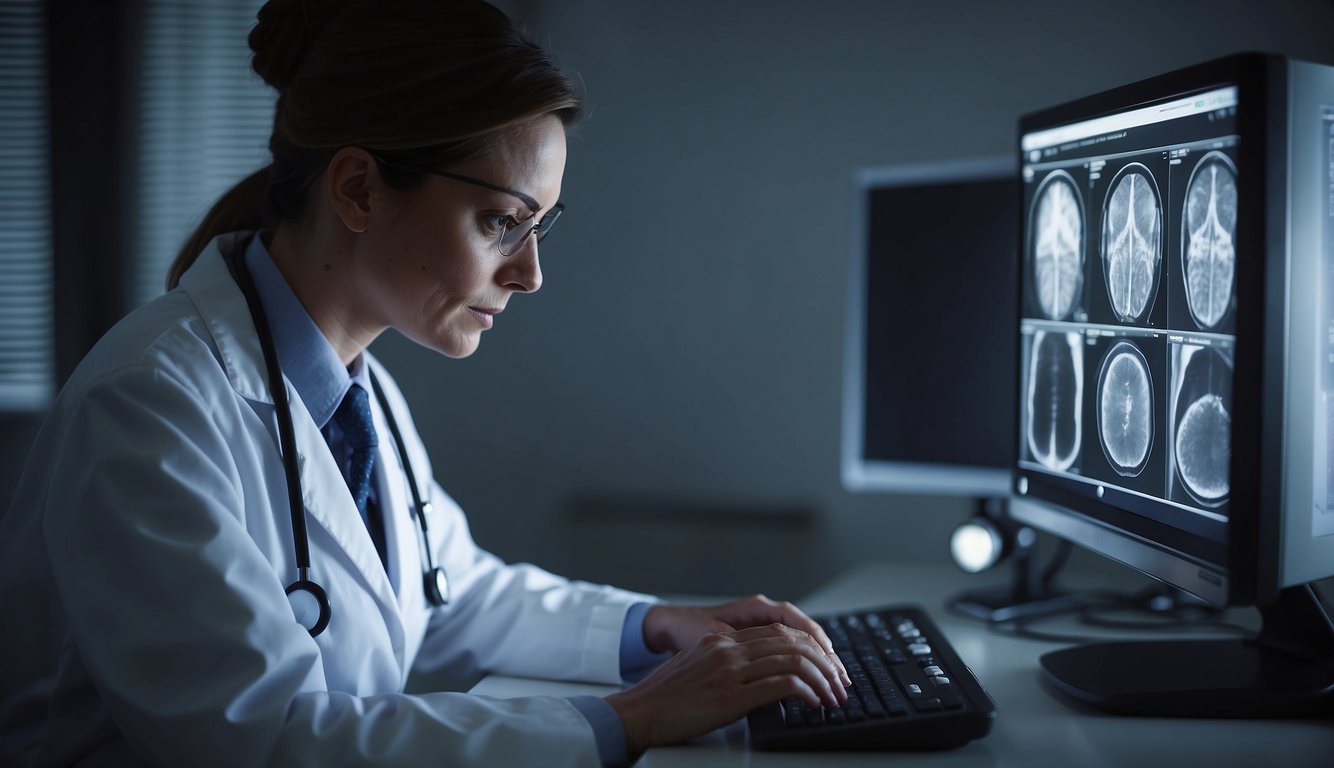
Common Symptoms
Fibroids are noncancerous tumors that grow in the uterine wall. Many women with fibroids do not experience any symptoms. However, when symptoms do occur, they can be disruptive and uncomfortable. The most common symptom of fibroids is heavy menstrual bleeding. Other symptoms include frequent urination, pelvic pressure, painful periods, constipation, and back pain.
Diagnostic Procedures
If you are experiencing any of the symptoms mentioned above, you should see a healthcare provider. Your provider may perform a pelvic exam to check for the presence of fibroids. They may also order an ultrasound, MRI, or hysteroscopy to get a better look at the fibroids and determine their size and location.
An ultrasound is a noninvasive procedure that uses sound waves to create images of the uterus. It can be used to detect the presence of fibroids and determine their size and location.
MRI is a more advanced imaging technique that uses a magnetic field and radio waves to create detailed images of the uterus. It can be used to determine the size, location, and type of fibroids.
Hysteroscopy is a procedure that involves inserting a small camera into the uterus to examine the lining and the presence of fibroids.
Fibroids can cause a range of symptoms that can be disruptive and uncomfortable. If you are experiencing any of these symptoms, you should see a healthcare provider. Your provider may perform a pelvic exam and order an ultrasound, MRI, or hysteroscopy to diagnose the presence of fibroids and determine their size and location.
Factors Influencing Fibroid Development

As a medical professional, I have observed that several factors can influence the development of fibroids. These factors include hormonal, lifestyle, and dietary factors.
Hormonal Factors – Fibroid Diseases
Hormonal factors such as estrogen and progesterone play a significant role in the development of fibroids. According to a study on NCBI, these hormones stimulate the growth of fibroids. Women who have a family history of fibroids are more likely to develop them due to genetic factors that contribute to hormonal imbalances.
Lifestyle and Diet
Lifestyle and dietary factors such as obesity, diet, and physical activity levels can also influence the development of fibroids. Obesity can increase the risk of developing fibroids due to the increased production of estrogen. According to Mayo Clinic, women who consume a diet high in red meat and low in green vegetables and fruit are more likely to develop fibroids.
A study on Tandfonline suggests that increased fruit and vegetable intake and lower BMI are protective factors in fibroid development. It is important to maintain a healthy lifestyle and diet to reduce the risk of developing fibroids.
Hormonal, lifestyle, and dietary factors can significantly influence the development of fibroids. It is essential to maintain a healthy lifestyle and diet to reduce the risk of developing fibroids. Women who have a family history of fibroids should be aware of the increased risk and seek medical attention if they experience symptoms.
Fibroids and Reproductive Health – Fibroid Diseases

Fibroids are non-cancerous growths that develop in the uterus. While they are usually not harmful, they can sometimes cause problems with reproductive health. In this section, I will discuss the impact of fibroids on fertility and pregnancy.
Impact on Fertility – Fibroid Diseases
Fibroids can sometimes interfere with fertility by blocking the fallopian tubes or changing the shape of the uterus. This can make it harder for sperm to reach and fertilize an egg. However, not all fibroids have an impact on fertility. Small fibroids that do not change the shape of the uterus are unlikely to cause fertility problems.
If you are struggling with infertility and have been diagnosed with fibroids, it is important to speak with your doctor. They can help you determine whether the fibroids are likely to be causing your fertility problems and recommend treatment options.
Fibroids During Pregnancy
Fibroids are common during pregnancy, but they do not always cause problems. Small fibroids are unlikely to cause complications, but larger fibroids may increase the risk of certain complications, such as preterm labor, miscarriage, or placental abruption.
If you are pregnant and have fibroids, your doctor will monitor you closely to ensure that the fibroids are not causing any complications. In some cases, they may recommend treatment to reduce the size of the fibroids or prevent them from causing problems during pregnancy.
While fibroids can sometimes cause problems with reproductive health, they are usually not harmful. If you are struggling with infertility or are pregnant and have fibroids, it is important to speak with your doctor to determine the best course of action.
Treatment Options – Fibroid Diseases
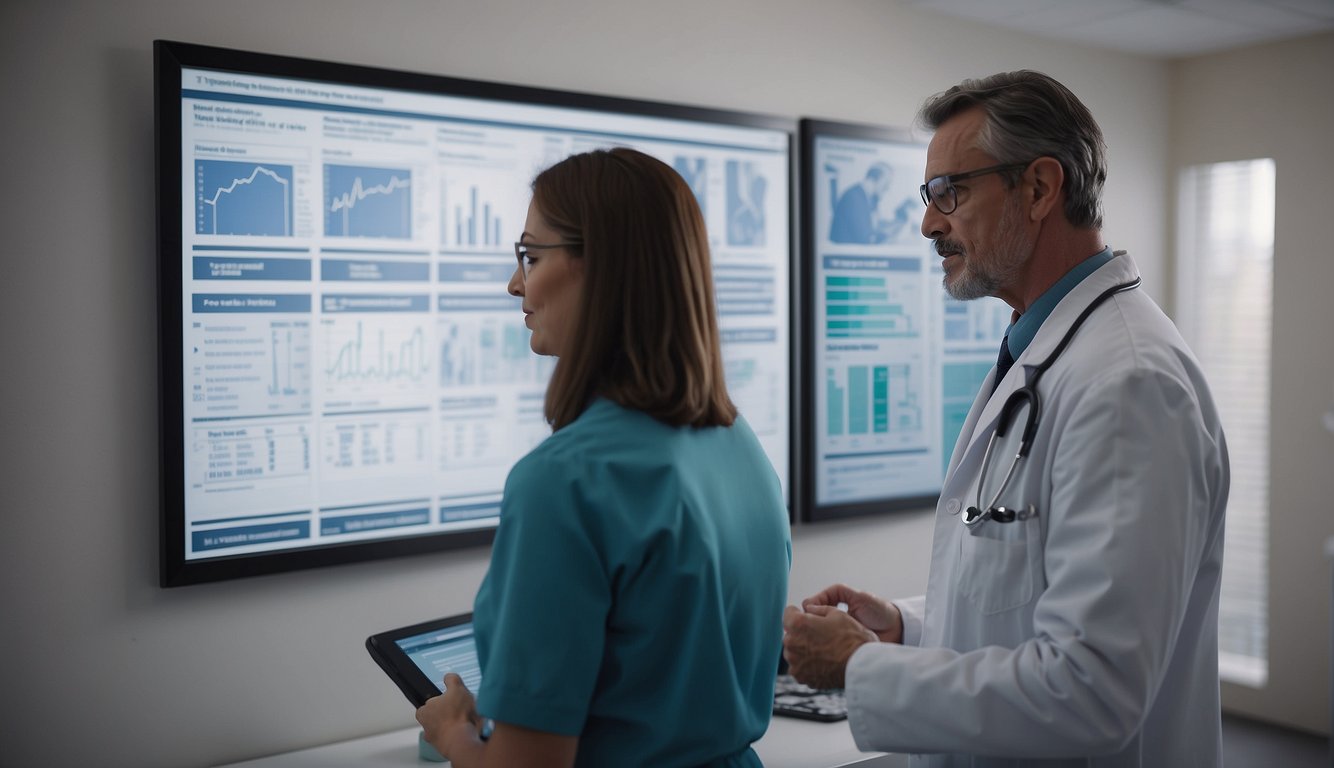
Fibroids are noncancerous growths that develop in the uterus. Treatment options vary depending on the size, number, and location of the fibroids, as well as the severity of symptoms. In this section, I will discuss the most common treatment options for fibroids.
Medication and Non-Invasive Treatments
Medication can be used to manage symptoms of fibroids, such as heavy bleeding and pain. Birth control pills can help regulate menstrual bleeding, while gonadotropin-releasing hormone (GnRH) agonists can shrink fibroids by suppressing estrogen production. Tranexamic acid is another medication that can reduce heavy bleeding. Non-invasive treatments, such as uterine artery embolization (UAE) and magnetic resonance imaging-guided focused ultrasound surgery (MRgFUS), can also be used to shrink fibroids. UAE is a minimally invasive procedure that blocks the blood supply to the fibroids, causing them to shrink. MRgFUS uses high-frequency ultrasound waves to destroy fibroids without making any incisions.
Surgical Interventions – Fibroid Diseases
Surgical interventions are often recommended for women with severe symptoms or large fibroids. Myomectomy is a surgical procedure that involves removing the fibroids while leaving the uterus intact. This procedure is often recommended for women who want to preserve their fertility. Hysterectomy is a surgical procedure that involves removing the uterus and is often recommended for women who have completed their childbearing or who have severe symptoms that do not respond to other treatments. Endometrial ablation is a procedure that destroys the lining of the uterus and can be used to manage heavy bleeding. Radiofrequency ablation is a newer procedure that uses heat to destroy fibroids. Laparoscopy and robotic surgery are minimally invasive procedures that can be used to remove fibroids. Hysteroscopic myomectomy is a procedure that involves removing fibroids through the cervix and vagina.
Treatment options for fibroids vary depending on the size, number, and location of the fibroids, as well as the severity of symptoms. Medication and non-invasive treatments can be used to manage symptoms, while surgical interventions may be recommended for women with severe symptoms or large fibroids. Women should discuss their treatment options with their healthcare provider to determine the best course of action for their individual situation.
Managing Fibroid Symptoms – Fibroid Diseases

As someone who has experienced fibroids, I understand how challenging it can be to manage the symptoms. Fortunately, there are several ways to manage fibroid symptoms that can help you feel more comfortable and improve your quality of life.
Pain Management
One of the most common symptoms of fibroids is pain. The pain can range from mild discomfort to severe cramping. Over-the-counter pain relievers like ibuprofen can help manage the pain. If the pain is severe, your doctor may prescribe stronger pain medication.
Lifestyle Adjustments – Fibroid Diseases
Making some lifestyle adjustments can also help manage fibroid symptoms. If you have heavy bleeding, it may be helpful to wear dark clothing or use pads with wings to prevent leaks. You may also want to avoid wearing light-colored pants or skirts.
Anemia is another common symptom of fibroids. Eating a diet rich in iron can help prevent anemia. Foods like spinach, lentils, and red meat are all good sources of iron. If you are not getting enough iron from your diet, your doctor may recommend taking an iron supplement.
In some cases, your doctor may recommend watchful waiting. This means that they will monitor your fibroids to see if they are growing or causing any symptoms. If your fibroids are not causing any problems, your doctor may recommend waiting to see if they shrink on their own.
Managing fibroid symptoms can be challenging, but there are several ways to make it easier. Pain management and lifestyle adjustments are two effective ways to manage fibroid symptoms. If you are experiencing fibroid symptoms, talk to your doctor about the best way to manage them.
Risks and Complications – Fibroid Diseases
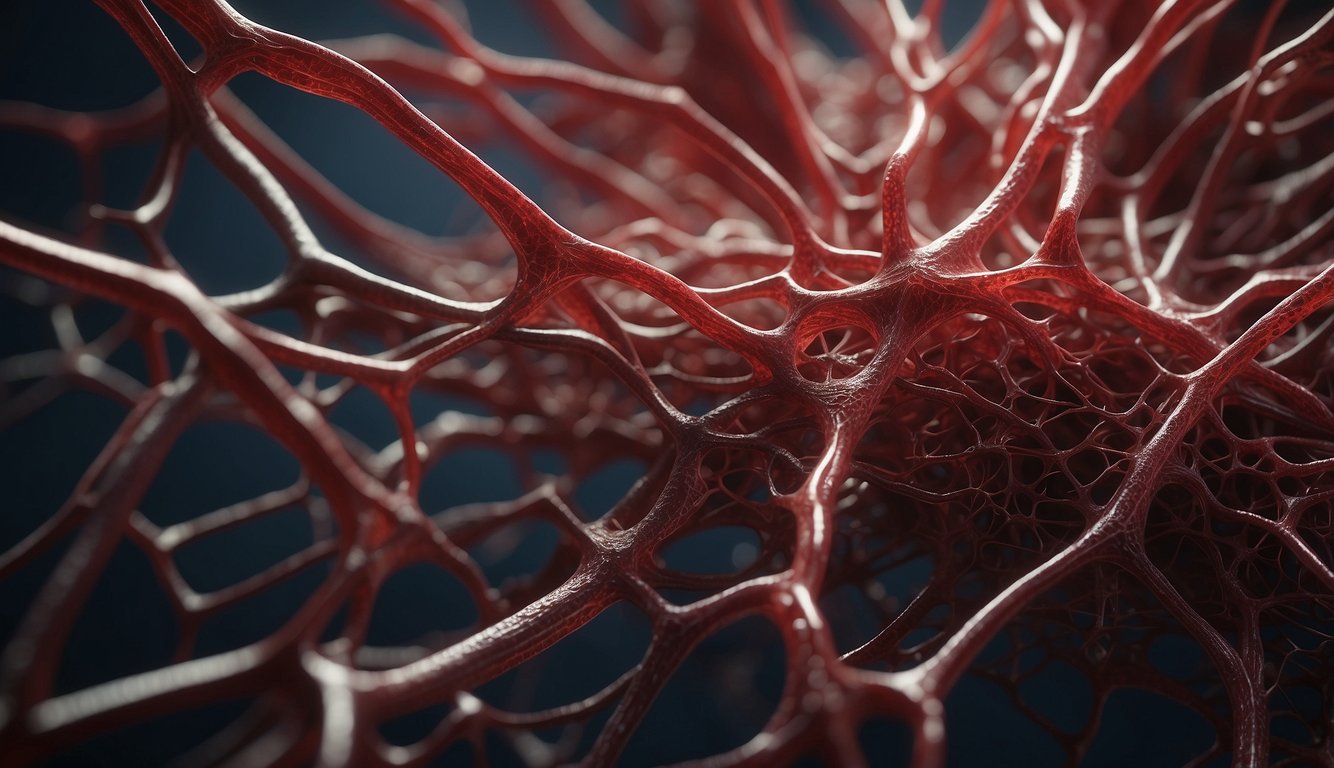
Fibroids are generally noncancerous growths that develop in the uterus during a woman’s reproductive years. However, in rare cases, fibroids can become cancerous. According to the Mayo Clinic, about one in 1,000 women with fibroids develop cancer.
Potential Complications
The most common complications associated with fibroids include excessive bleeding, pain, and pressure on the bladder or rectum. In some cases, fibroids can cause complications during pregnancy, such as premature labor, fetal malpresentation, and placental abruption.
Risk Factors – Fibroid Diseases
Several factors can increase a woman’s risk of developing fibroids. According to the National Institute of Child Health and Human Development (NICHD), these include:
- Age: Women over the age of 30 are more likely to develop fibroids.
- Race: African-American women are at a higher risk of developing fibroids than women of other races.
- Family history: Women with a family history of fibroids are more likely to develop them.
- Obesity: Women who are overweight or obese are more likely to develop fibroids.
- Early onset of menstruation: Women who start menstruating before the age of 10 are at a higher risk of developing fibroids.
Other factors that may increase a woman’s risk of developing fibroids include a diet high in red meat and low in fruits and vegetables, drinking alcohol, and having low levels of vitamin D.
It is important to note that while fibroids can be a cause for concern, they are usually harmless. If you are experiencing symptoms or have concerns about fibroids, it is important to speak with your healthcare provider.
Advancements in Fibroid Research – Fibroid Diseases
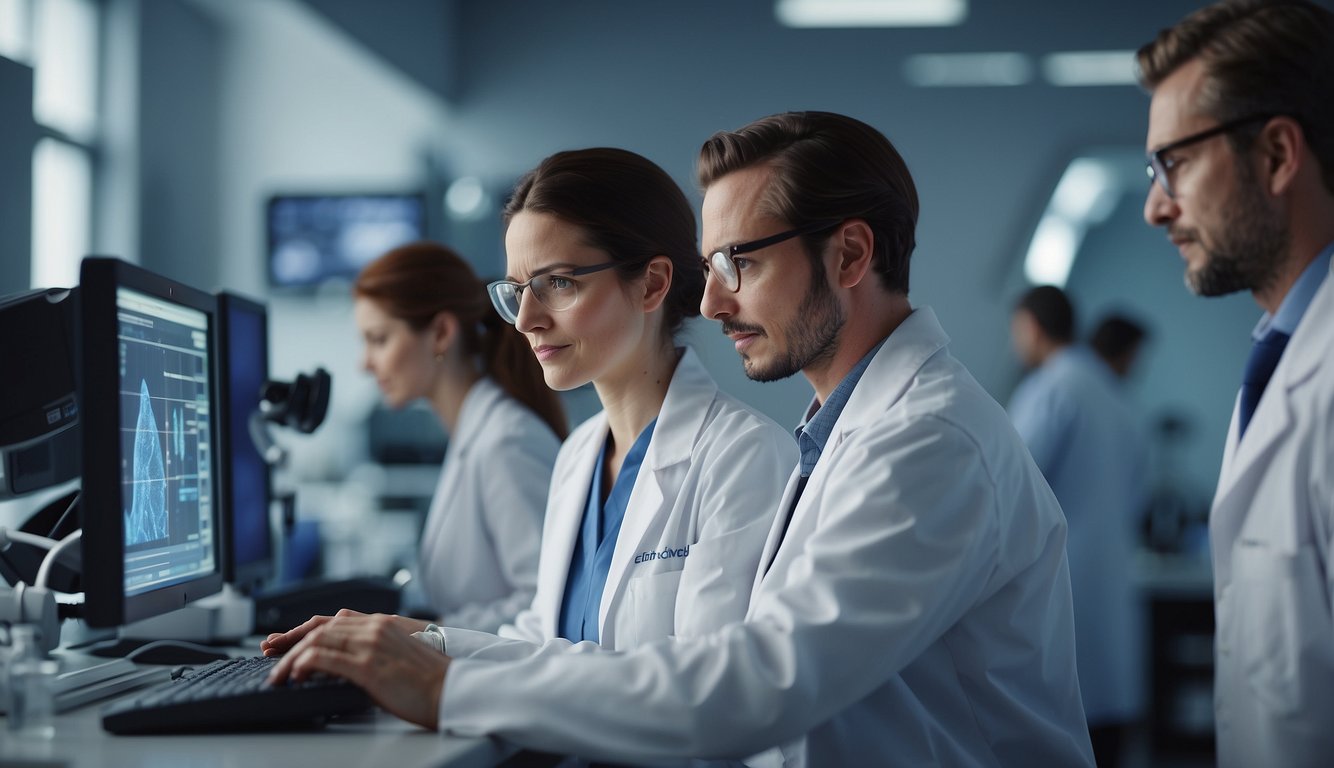
As research on fibroids continues to evolve, there have been significant advancements in the diagnosis and treatment of the disease. In particular, emerging treatments and technological innovations have shown promising results in improving outcomes for patients.
Emerging Treatments
One such emerging treatment is uterine fibroid embolization (UFE), a minimally invasive procedure that has been shown to effectively treat fibroids with fewer complications compared to traditional surgical methods. UFE involves injecting small particles into the blood vessels that supply the fibroids, causing them to shrink and eventually die off.
Another promising treatment option is radiofrequency ablation (RFA), a non-invasive procedure that uses heat to destroy the fibroids. RFA has been shown to be safe and effective, with minimal side effects and a quick recovery time.
Technological Innovations – Fibroid Diseases
Advancements in magnetic resonance imaging (MRI) technology have also had a significant impact on fibroid research. MRI-guided focused ultrasound (MRgFUS) is a non-invasive procedure that uses high-intensity ultrasound waves to destroy the fibroids. This technique is guided by MRI, allowing for precise targeting of the fibroids while minimizing damage to surrounding tissue.
Additionally, researchers are exploring the use of artificial intelligence (AI) in the diagnosis and treatment of fibroids. AI algorithms can analyze large amounts of patient data to help identify patterns and predict outcomes, allowing for more personalized and effective treatment plans.
Overall, these advancements in fibroid research offer hope for improved outcomes and quality of life for patients. As research continues to evolve, it is important to stay informed and work with healthcare providers to determine the best treatment options for individual cases.
Sources:
The Enzyme Factor, Hiromi Shinya, Council Books 2007
Fibroid Tumor and Endometriosis Self Help Book, By Susan M. Lark, Celestial Arts 1995Enzymes The Fountain of Life, By D.A. Lopez,
Prescription for Nutritional Healing by James Balch M.D. and Phyllis Balch, C.N.C., Penguin Putnam Inc., 2000
Discovering Enzymes, D. Dressler and H. Potter, Scientific American, 1991
Little Herb Encyclopedia, by Jack Ritchason; N.D., Woodland Publishing Incorporated, 1995
The Ultimate Healing System, Course Manual, Copyright 1985, Don Lepore
Planetary Herbology, Michael Tierra, C.A., N.D., Lotus Press, 1988
Handbook of Medicinal Herbs, by James A. Duke, Pub. CRP Second Edition 2007
The Complete Medicinal Herbal, by Penelope Ody, Published by Dorling Kindersley
Before You Go – Check the Following Articles!
Check these Categories:
Frequently Asked Questions – Fibroid Diseases

What are the symptoms indicative of fibroid complications?
Fibroids can cause a variety of symptoms, including heavy menstrual bleeding, prolonged periods, pelvic pressure or pain, frequent urination, constipation, and pain during sex. In rare cases, a fibroid can cause sudden, severe pain when it outgrows its blood supply and starts to die. If you experience any of these symptoms, it is important to consult with a healthcare provider.
At what size should a fibroid be considered for medical intervention?
The size, location, and number of fibroids can influence whether medical intervention is necessary. In general, fibroids larger than 5cm or those that cause significant symptoms may require treatment. However, the decision to intervene should be made on a case-by-case basis, taking into account the individual’s symptoms, age, desire for future fertility, and other factors.
What are the latest non-surgical treatments for fibroids?
There are several non-surgical treatments available for fibroids, including medications to manage symptoms, ultrasound-guided focused ultrasound surgery (FUS), and uterine artery embolization (UAE). FUS uses high-frequency sound waves to destroy fibroid tissue, while UAE involves blocking the blood supply to the fibroids. These treatments can be effective in reducing symptoms and preserving fertility, but they may not be appropriate for all individuals.
What are the different types of fibroids one might have?
There are three main types of fibroids: intramural fibroids, which grow within the muscular wall of the uterus; submucosal fibroids, which grow just beneath the lining of the uterus and can cause heavy bleeding; and subserosal fibroids, which grow on the outer surface of the uterus and can cause pelvic pain or pressure.
What are the potential risks if fibroids are not treated?
Untreated fibroids can lead to a range of complications, including anemia, infertility, and pregnancy complications such as miscarriage or preterm labor. In rare cases, fibroids can become cancerous, although this is extremely rare.
How can fibroids affect the appearance of the abdomen?
Large fibroids can cause the abdomen to appear distended or enlarged, similar to the appearance of pregnancy. This can be a source of discomfort or embarrassment for some individuals. However, the appearance of the abdomen is not always indicative of the severity of fibroid symptoms or the need for medical intervention.
